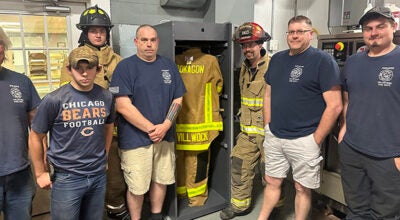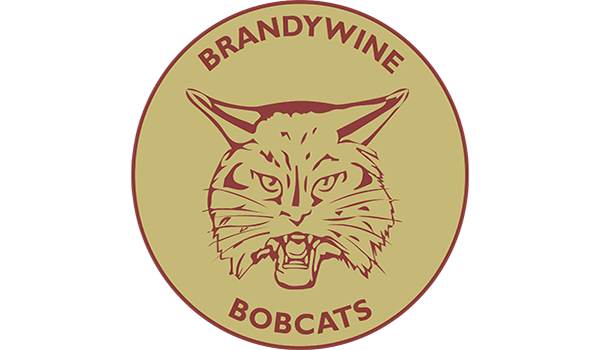Turtle Island developing potential of renewable wind, solar power
Published 8:48 am Friday, August 7, 2009
By JOHN EBY
Dowagiac Daily News
When Tom Topash left the classroom behind, he decided it was high time he put his money where his mouth was – except with the wrinkle that he put his work where his spirituality is.
“I truly believe in renewable energies,” Topash said. “They’re good for Mother Earth. This is a rich and wonderful time. We have a president who is encouraging innovation and change in a totally new way to see it and reinvent ourselves. I wanted to be part of that!”
To make wind turbines and solar panels available, Topash launched Turtle Island Wind and Solar.
“It’s a real mission,” he said. “Reduction of dependence on foreign oil. Fortunately, because of our president and others, there have been some incentives coming about because what I’m describing are pretty pricey items. It costs about $38,000 to $40,000 for a wind turbine to power your home. It could be that much as well for solar panels.
“One came about at the beginning of this week,” Topash said Thursday. “The Department of Treasury, which has never been in the business of awarding grants before, now, if you install renewable energy, you’ll get a 30-percent payback on whatever you put in that’s renewable. Some of the power companies are going kicking and screaming, but many of them are endorsing it. Power companies are providing net metering, which means you get a special meter on the wall outside your home, and you can make that go backwards. Power companies started out, ‘Okay, we’ll give you 3 cents per kilowatt hour.’ Now, just two weeks ago, Consumers Power, which is a big chunk of Michigan, started paying 65 cents a kilowatt hour, which actually makes it a money-making venture” for qualified customers.
The point, Topash said, is, “Whatever power you generate, you send it to a utility company and they pay you premium dollar. It’s been going on in Germany for a long time. Germany’s been way ahead of us as far as renewable energies, and they have some nice wind there on the North Sea coast to make the wind turbines profitable for them as well. Many families have installed solar power and sell it back to utilities. It’s a $300 to $400 a month income.
“Power companies now have to buy it because they’ve been ordered to increase renewable sources of energy by 10 percent by 2011, 15 percent by 2015 and 20 percent by 2020. That’s just becoming effective now. That’s a big change in the country. They’ve structured so you do not have the utility itself putting up a big wind farm. They have to get it from individuals. That means all of us are encouraged to engage. It just makes sense. For the past umpteen years, we’ve just been hurtling head-long into serious problems I call resource wars. It’s not necessary. As Americans, if we can make a significant shift in thinking and be able to take care of ourselves energy-wise, we have a new world.”
President Barack Obama in nearby Wakarusa, Ind., Wednesday, called on America to be the world leader in electric vehicle production.
“He doesn’t think we should be buying our wind turbines from foreign countries,” Topash said. “We should be producing them here. This is the older America I remember. This is what I look forward to and I see extraordinary opportunities.”
There are state energy-efficiency grants available to for-profit and non-profit businesses alike, Topash said. “My son-in-law manages Community Mills, which could put in a $500,000 unit in and a quarter of that is paid for right off the top.”
Turtle Island Wind and Solar in the Cassopolis incubator distributes Uni-Solar and Kyocera solar energy solutions, designing unique packages based on specific location and energy needs.
Solar modules can pay for themselves in just a few years.
Of secondary importance to Tom is that as the fledgling concern grows, his son, Mike, “is really going to become Turtle Island. He would have been here today but he had an emergency appendectomy.”
Turtle Island is “beginning really small.” It has manufacturing “aspirations,” but “it’s a long way away. Right now, we bring our own raw talent, and that’s writing skills in putting packages together. We’re essentially a dealer of solar panels and wind turbines with aspirations to go different directions. One is to work with federal bidding for large projects. I’ve never leaned on my ‘minority status’ (as a Potawatomi Indian), but going into business, it’s looking like that could help,” he said.
Topash was asked whether solar or wind power proves more efficient in this area.
“We end up recommending a combination most of the time,” Topash said, “because the sun shines in the day and the wind blows at night. Everybody would like to get off the grid, but that’s not necessarily wise because when the wind isn’t blowing and it’s night, you’ve still got a steady source of power as well.”
For $1,500, he said, a “bank” of batteries could be added to store power.
The retired educator, of Berrien Center, taught in an Eskimo village in Alaska, spent 20 years at Sylvester Elementary School in Berrien Springs, started an elementary school for the Sault tribe in the Upper Peninsula, spent one year as a Pokagon Band administrator and closed out his career in Niles as principal of the junior high and at Eastside Elementary.
“We have gone through the wall of difficulty,” Topash told Dowagiac Rotarians at Elks Lodge 889. “Natives are proud being Natives. That’s a huge change. We are bringing back our old ways. I was an adult before I learned that we hadn’t truly lost all of our traditions. I embraced it because ‘blood memory’ was really clear. The old ways fit well for me and for my family,” said the lifelong Catholic, admitting to a “love-hate relationship” with the University of Notre Dame, where his daughter teaches.
Notre Dame “denies that the Pokagons have a relationship with their school, which is unfathomable.” He was part of a group which met last winter with Father Theodore Hesburgh.
Spirituality “envelopes Catholicism because it’s bigger,” he said. “That’s why you hear about Vision Quests where you go off on your own and learning through four arduous days of no food and water that you’re going to have the greatest likelihood of experiencing what it is that you’re about and what connection you have to the spirits that are out there. This is all real different thinking. I was so pleased that it wasn’t lost. That thinking meant a great deal when it came to our connectedness to this place, to Mother Earth, Father Sky and Grandmother Moon. Here we are putting family connection names to our environment simply because that’s how important it was – and still is.”






